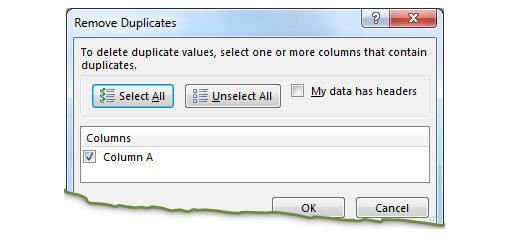


The change required is highlighted below. Instead, we can use the INDEX function to process the array. If you wish to avoid Ctrl + Shift + Enter, we cannot use SUMPRODUCT as before. These errors are captured by the IFERROR statement and turned into blank cells with two quotation marks (“”). When there are no 0’s remaining (i.e., the list contains all the unique values) the MATCH function will return errors. The fourth item in the list is the first zero, so that value is returned.Īs the formula copies down further there will be less 0’s remaining. The formula in Cell E2 is: Īs more items are now included within the unique list (which has now grown to Cells B2 – B5) more 1’s will appear. We have been asked to identify the number of individuals who are on both lists (i.e., how many from St John’s school attended the exam). In the screenshot below there is a list of students from St John’s school (Cells A2 – A7) and a list of students who attended a specific exam (Cells B2-B6). The COUNTIF function can be used to compare two lists and return the number of items within both lists. We’ll start with some basic scenarios and slowly layer on the complexity until we achieve some advanced formula magic.

#Find duplicates excel 2016 how to#
This post looks at one aspect of this and considers how to use the COUNTIF function to create and compare lists to check for duplicate or unique values. Counting cells which meet specific criteria may not seem particularly useful, but when combined with other functions, and boolean (true/false) logic, it creates new capabilities you never thought possible. Question: Until then what is the best option?ĬOUNTIF is an untapped powerhouse for most Excel users. Therefore, it could be 6 or more years before enough users have the new functionality to use it safely and ensure compatibility.
#Find duplicates excel 2016 upgrade#
However, not everybody has the subscription and will upgrade when it is sensible for their business, often combining it with a hardware refresh. These new formulas are being rolled out to Office 365 subscribers over the next few months. The Excel team recently announced new dynamic array formulas, which can create unique lists, sort and filter with a simple formula.


 0 kommentar(er)
0 kommentar(er)
